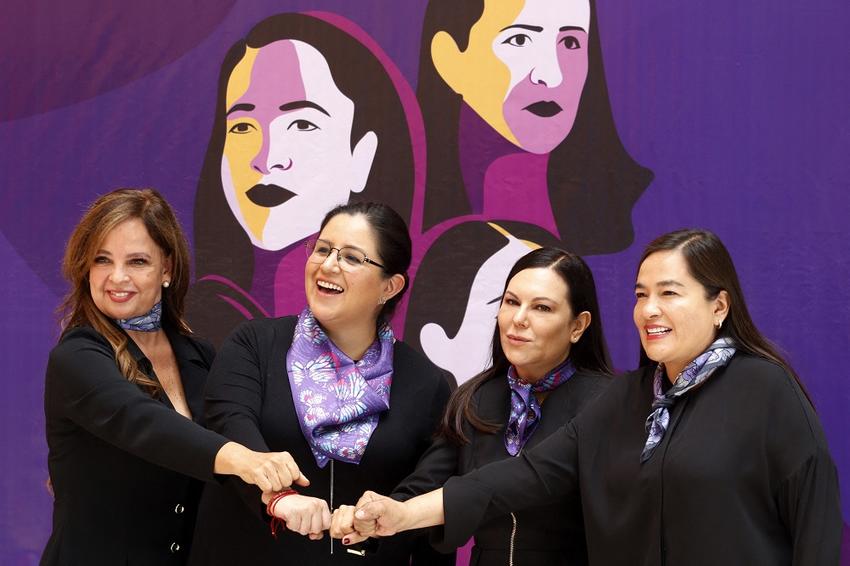Sonia Palmieri* asks if the record number of women in Australia’s new Parliament will finally make it a safe place for women to work.
The 2022 federal election was a victory for female candidates and a historic moment in Australia’s journey to a parliament that endorses and promotes gender equality in all its work.
At this stage of the count, the House of Representatives will have at least 57 women, representing 38 percent of the chamberlains.
This is our highest percentage of women ever in the House of Representatives.
The Senate reached and exceeded 50 percent in the previous Parliament and will maintain it in the new Parliament.
These new levels will see Australia reverse a 20-year decline in the international ranking of women in national parliaments, from 57th to about 37th, ahead of Portugal, Tanzania, and Italy.
How did this happen? And what does this mean for the culture in Parliament House?
The simplest explanation is numerical: More women won because more women than ever competed for seats in 2022, making the “you have to be there to win it” maxim true.
Women represented just under 40 percent of all candidates in Saturday’s poll — an increase, analyst Ben Raue says, from about 32 percent in 2016 and 2019 and less than 28 percent in 2013.
The figures for 2022 also indicate that female candidates outperformed male candidates.
A wave of unexpected victories for women accompanied the depletion of the Liberal Party’s votes.
Women won as challengers in safe or reasonably safe seats previously occupied by sitting MPs and ministers.
This includes the well-publicized victories of independent and underage party women in Curtin, Fowler, Goldstein, Kooyong, Mackellar, North Sydney, Ryan, and Wentworth.
But it also includes the victories of Labor Party women who took the seats of Boothby, Chisholm, Hasluck, Higgins, Pearce, Reid, and Swan.
In this, there is a historical comparison to the 1996 election, in which the landslide election of John Howard saw an unprecedented number of 23 women invade the House of Representatives.
The Liberal Party had also put these women in unwinnable seats, but the swing away from Labor changed the meaning of a safe seat instead of a fringe.
Those women consolidated their positions in the 1998 elections, and the number of women continued to increase.
The turnaround to the coalition in 1996 was so great that it was difficult for the PvdA to return.
However, women in the “class of 1996” also maintained their marginal seats through coordinated work with their constituents.
The class of 2022 would do well to take this lesson to heart.
In 2022, Australian voters took advantage of the alternatives presented by independent and green female candidates.
Raue was again the first to notice the seismic change in the proportion of women self-employed in 2022: a staggering 65 percent, up from about 22 percent in 2019.
Women have deliberately chosen not to run for the major political parties.
And for a good reason: Australian majors have repeatedly proven that their pre-selection processes are top-down, invisible, and impervious to the growing call for equality and diversity.
These campaigns were also driven by a record number of volunteers knocking on record doors and holding many conversations with local communities.
Following the model established by Cathy McGowan in India in 2013, these community-based campaigns serve as an important lesson not only in Australia but worldwide.
It is also true that the swing and community-based campaigns have resulted in the loss of female talent.
The moderate Liberal Katie Allen could not ease her voters’ discontent with the government in Melbourne’s Higgins.
Likewise, Labor’s Terri Butler could not prevent the “Greenslade” at Brisbane’s Griffith.
Parachuted Labor candidate Kristina Keneally failed to convince Fowler’s people that she would be their best representative.
In arguably one of the country’s most banal election campaigns, Australian voters seemed to want something different.
Gender equality was not at the top of the topics deemed important in this election; it was well below climate change and the cost of living.
But nationwide voters chose candidates who explicitly wanted to change our political culture.
For example, Climate 200 candidates had women’s safety and equality as key policies.
The last Parliament brought the toxic work culture of Parliament House into the headlines.
The Set, the Standard report, published late last year by Sex Discrimination Commissioner Kate Jenkins, found that big party politics’ ‘win everything’ mentality was one of the main drivers of unsafe parliamentary workplaces.
Deep-seated party differences have also prevented cooperation between parties regarding gender equality.
The election of so many women and so many women from outside the major parties is a huge opportunity to change this.
The incoming Labor government will have to work with a new breed of women in parliaments: women, more importantly, who are new to the parliamentary field but have worked in professional workplaces.
They will carry those standards and expectations into the room.
The new crossbench will not be hindered by the need to protect a party.
Their voters have given them the mandate to hold Parliament accountable for the full set of portions of the Set the Standard report and for Jenkins’ 55 rec and. [email protected] reporting sexual harassment.
The women on the cross-bank won’t always agree, let alone with the new cabinet, but there’s a sense that they will approach work differently.
As newly independent Goldstein MP Zoe Daniel told ABC’s Insiders after the election, “Independents are already communicating and collaborating.” [with each other]†
If this approach continues, it will greatly affect how Parliament works.
*Sonia Palmieri, Gender Policy Fellow, Australian National University.
